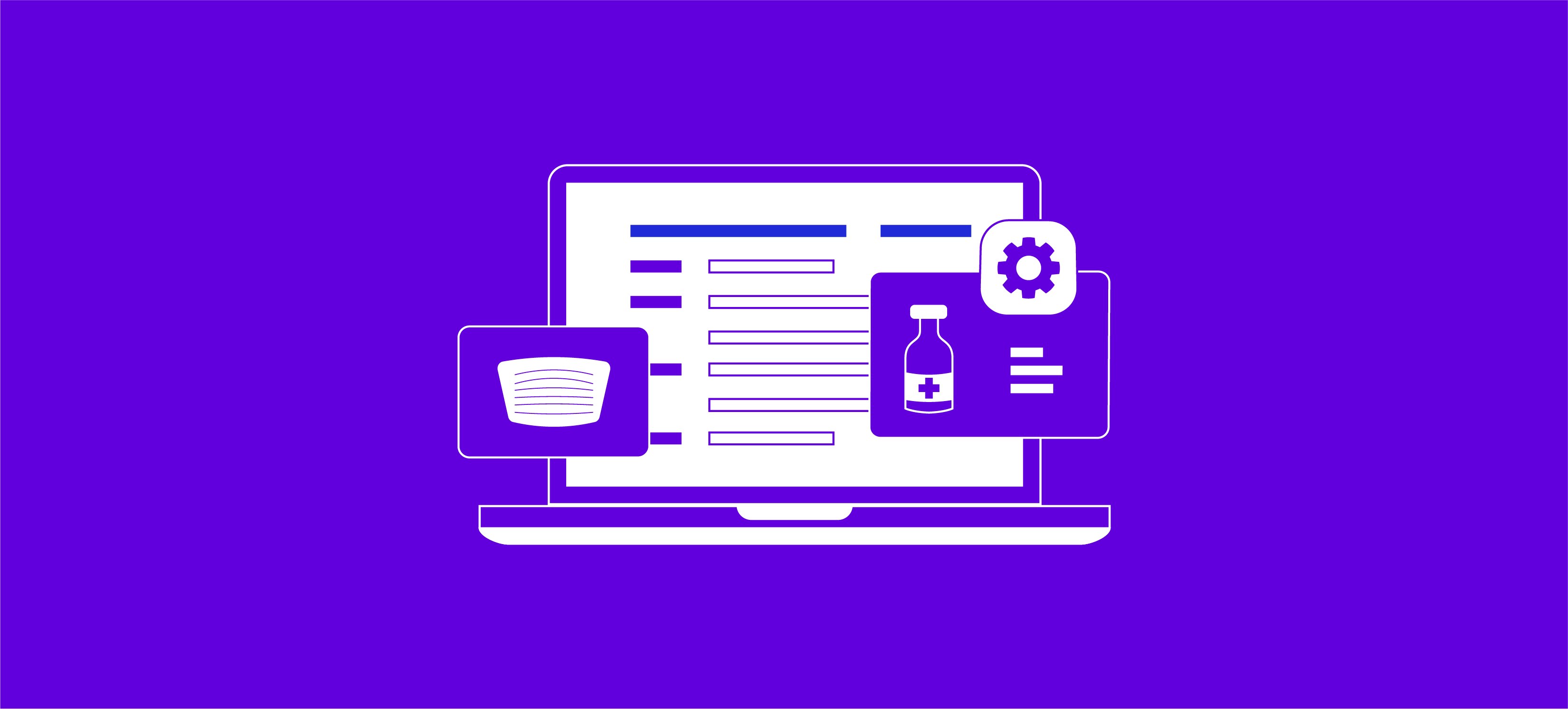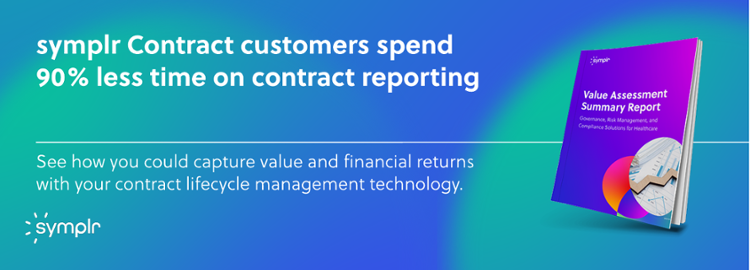Pair Enterprise Resource Planning (ERP) and Healthcare-Specific Contract Management for Rapid ROI

Healthcare organizations must control skyrocketing costs and increase operational efficiency to survive the financial and workforce crises COVID-19 triggered. Your enterprise resource planning (ERP) software plays a key role in doing that, but it alone isn’t equipped to meet healthcare’s unique business processes and regulatory compliance challenges. ERP integration with a healthcare-specific contract management solution holds the key.
Pairing the two links contractual and operational data to shine a light on problem areas and potential fixes, empowering your organization to achieve much tighter control over your costs.
What is an ERP integration?
ERPs serve as the administrative backbone for many organizations, providing a comprehensive view of financial, purchasing, and human resources (HR) data. However, in many cases, vital human resource and vendor data is initiated and stored in multiple systems. For example, when you initiate provider contracting and credentialing through your contract management solution, that contracting and credentialing data is stored there. At the same time, the new provider is set up in your ERP software for timesheet, job description, and payroll management. Your contract management program and ERP must be able to talk to each other to establish a single source of truth for provider data. That’s where ERP integration comes in.
ERP integration connects and synchronizes ERP software to other applications and data sources. The objective is to achieve true data mastery by sharing information across systems to improve productivity and insights. ERP application integration gives you a unified view of information from different systems in real time, whether the data originates in the ERP or in other systems.
SAP and ERP are often used together because SAP is among the world’s largest vendors of ERP systems. The main feature of any ERP, however, is that it is a suite of applications that helps businesses with data integration.
What challenges do healthcare organizations face without ERP integrations?
Implementing cost-control strategies is challenging if you don’t have a clear, comprehensive view of your organization’s cost drivers and levers. Three main factors contribute to limited visibility:
- Health system consolidation has led to siloed, incompatible legacy systems that only a handful of people view and understand.
- Reliance on agnostic (non-healthcare-specific) systems for contract management diminishes transparency and compliance safeguards, most notably for physician contracts, outsourced services, real estate, and lease management arrangements. Physician and managed care contracts are particularly challenging, as myriad regulatory requirements govern them.
- Many health systems struggle with fragmented contract storage. Documents reside in multiple locations ranging from legal to supply chain, facilities, finance, or revenue cycle—sometimes even on laptops. When contracts are stored in a SharePoint site, a shared network drive, or, worst case, in filing cabinets, it’s near-impossible for the right people to access the contract data they need for business analytics and decision making.
Without ERP integrations, you’ll have limited visibility into your organization’s contract data and non-labor spending, thereby creating obstacles to cost control and regulatory compliance. Some common examples follow:
Time-consuming manual processes: Without an integration, moving information between your contract management solution and ERP application requires cumbersome manual data entry that increases administrative burden, decreases operational efficiency, and prevents staff from performing higher-value work. Highly skilled, well-compensated personnel spend too much time trying to manually connect the dots with incomplete information.
When you have thousands of employees—with contract data stored in your contract management solution and payroll and human resource data stored in your ERP software—it’s difficult to keep up with employment status. Notably, physicians and other employees who leave your organization should no longer have access to certain software and electronic health records (EHR) containing protected health information (PHI). Therefore, once providers are set up in your ERP, it’s vital to accurately maintain your organization’s active directory. Without an ERP integration, staff would have to manually track provider employment status (via contract data) and update that status in your ERP.
Data silos: Data silos significantly limit access to essential information, preventing communication between systems and people. Maintaining compliance and controlling costs become more difficult when multiple people are involved in executing tasks yet use different systems. In healthcare, staff in different departments notoriously use software programs that don’t share data resulting in duplicated work, potentially missed compliance violations, and/or over-spending. Invoices that charge premium prices are paid because the person paying them has no access to the contract terms.
Insufficient real-time and accurate data: Disconnected systems require manual data updates that delay information exchange. If provider employment status must be manually entered into the ERP, providers who are no longer employed by or affiliated with your healthcare organization may continue accessing the EHR—violating the Health Insurance Portability and Accountability Act (HIPAA)—until their access is removed. Or, contracts may auto-renew without the benefit of review due to staff bandwidth constraints or inadequate visibility and advance warning.
What are the benefits of a contract management/ERP integration?
You can avoid financial and other pitfalls by integrating your healthcare-specific contract management solution with your ERP solution. ERPs are designed to support vendor management, but only a healthcare-specific contract platform can provide health systems with the workflows, analytics, and safeguards necessary to effectively address the regulatory and compliance requirements associated with their contract asset.
By coordinating efforts and sharing data, a contract-ERP integration helps you:
1. Reduce duplicate data entry. For example, when you engage a new supplier, an entry in the ERP system automatically moves to the contract management solution, eliminating the need for manual input. This saves time, reduces human error, and allows staff to work at the top of their skill set. When the contract-ERP integration platform is bi-directional, a newly established vendor agreement or physician group contract in the contract management program will update the ERP purchasing solution to authorize payments for these services.
2. Control vendor costs and increase regulatory compliance. Are you paying your vendors more than the contracted rate? Has the vendor’s contract expired? Do you have a business associate agreement (BAA) for that vendor and/or do you need one? When contracts are stored in your contract management solution, and vendor invoices and payment information reside in your ERP system, managing your vendor relationships is difficult.
You could be paying invoices that charge premium prices, rather than those you’ve agreed to in hard-fought contract negotiations. Or, you may be issuing or renewing contracts with suppliers that are subject to credit holds or bankruptcy.
When your contracts and ERP systems are integrated, you can identify vendor overpayments and off-contract spend by automatically comparing payment data in your ERP with contract data. Invoice and payment information is automatically transferred from your ERP to your contract management solution, associating the data with the corresponding contract. Then, reports are created, triangulating purchasing activity against contracts by dollars and items purchased to identify overpayments.
Service providers—such as medical billing companies, transcription services, accountants, and attorneys—that create, receive, transmit, or maintain PHI on behalf of your organization are your business associates (BAs). HIPAA requires BAs that provide services that include accessing PHI to a covered entity (e.g., your healthcare organization) must sign a BAA. The Department of Health and Human Services Office for Civil Rights (HHS/OCR) can impose steep fines (up to $31k for a single missing BAA) and corrective action plans if you fail to have a BAA in place with your BAs.
Further, if HHS/OCR audits your organization, you must be able to supply a list of your BAAs and demonstrate that you’ve conducted due diligence with your BAs. In symplr’s experience, many healthcare organizations are missing BAAs in at least 10% of the contracts that require them. Contract analytics in your healthcare-specific solution can identify contracts that require BAAs but are missing them.
Contract analytics also identify contracts that contain auto-renewal clauses so you can track critical dates and review those contracts before they renew. Contract analytics finds redundant contracts and pricing that is higher than benchmarks, helping you determine which contracts should be canceled or should not be auto renewed.
3. Monitor physician compensation for regulatory compliance. The contract-ERP integration connects physician contracts with the HR system, increasing compliance with HR policies, training, and regulatory demands. Provider compensation is closely regulated by federal fraud and abuse laws, including the Anti-Kickback Statute (AKS) and Stark Law. To comply with the AKS and Stark Law, provider compensation for clinical and administrative activities must be consistent with fair market value (FMV) and not consider the value or volume of referrals the provider brings to the healthcare organization.
You must examine variability in total compensation for your providers, identifying payments that exceed FMV and may lead to compliance violations. You also need to track providers’ gifts/non-monetary compensation from, and financial relationships with, drug and medical device companies to identify potential conflicts of interest. (Notably, symplr enhances customer experience and accommodates customers with modules for gift alerts and conflicts of interest.)
Integrating your ERP with your healthcare-specific contract management solution to achieve true ERP system integration ensures that you are paying providers according to their contract requirements and FMV—and remain in compliance with the AKS.
4. Track employment status. By linking contract management and ERP, employment status updates are pushed to your ERP, helping you accurately maintain your active directory. By maintaining an accurate directory, you can control access to your EHR and other software containing PHI when employees leave, preventing HIPAA violations. Maintaining an up-to-date directory is also essential for reimbursement and customer relationship management (i.e., ensuring patients can easily reach your providers).
How does contract management/ERP integration deliver ROI?
Integrating ERP with a healthcare-specific contract management solution is a straightforward process that can take as little as a couple of days. Once up and running, ROI follows quickly because having all contracts in an electronic, consolidated solution provides complete visibility into your organization’s full range of cost-related obligations. You’ll save money by:
- Reducing duplicate data entry
- Identifying vendor overpayments
- Preventing expensive compliance violations
Key components of symplr’s healthcare-specific contract solution add significant value. Contract analytics identify contract redundancies and pricing irregularities (to prevent overpayments) and unmonitored auto-renewals for repetitive or less than optimal services. Compliance analytics help organizations identify risks and comply with regulations to avoid hefty penalties that can amount to millions of dollars.
By integrating symplr’s Contract Management solution with your ERP, you can increase visibility into all corners of an extremely complex industry, allowing you to control your healthcare contracts and, therefore, your costs.
